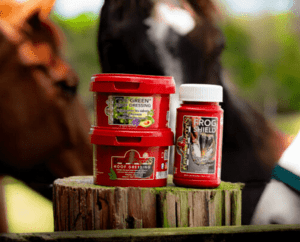Are You Using The Wrong Bit On Your Horse?

By Liv Gude of Professional Equine Grooms, special contributor
Is your bit wrong for your horse? Quite possibly, and then again, maybe not. Vague answers are my specialty and so are lists, so I will provide a handy checklist of ways your horse may be telling you he doesn’t like the bit in his mouth.
It’s really up to you and your horse’s crew – your vet, trainer, barn BFF, and possibly your dog – to decide what’s going on.
- Does your horse become a giraffe when he sees the bridle? That’s the horse equivalent of saying “no way”.
- Is your horse good at ripping your arms out of the sockets when he’s being ridden? This might be your horse saying, “The bit doesn’t work at all, or it works too much and it hurts, so I shall get comfortable at my human’s expense.”
- Are there sores on his tongue, the bars of his mouth, or the soft corners of his lips? Ever bitten the inside of your cheek? And then worn a bit and been asked to run around and jump things with it?
- Your horse’s tongue – does it stay in his mouth when he’s wearing a bridle? Sometimes there’s literally no room in your horse’s mouth for his bit.
- Does he transform into a head shaker when he’s wearing a bit? That’s another way horses say “OUCH”. Just as an FYI, veterinarians have found dozens and dozens of reasons why horses head shake. Definitely time for your horse’s team to start playing detective.
- Does your horse like to open his mouth while being ridden? This is an excellent way for horses to let you know they disapprove of your tack choices. It also may be a sign that you are not riding him back to front. Please be sure to allow your horse to open his mouth under saddle – this is valuable feedback about your equipment and your riding.
- Is your horse’s nose tucked behind the vertical as if he’s trying to escape backwards? He is literally trying to escape the bit. This is also a case in which riding front to back (a no-no) may be the cause.
Let’s complicate this quest to find the perfect bit with just the vast number of types of bits on the market, what your horse’s job is, and what his general personality is like. There has perhaps never been a larger can o’ worms.
So what do you do about this? Even if your horse is perfect, try these things anyway to become a more awesome horse person:
Make sure there’s space in his mouth. Fat bits don’t do well with shallow mouths, low palates, or big tongues. A great time to explore this is when your horse is sedated. You can literally see if there’s enough room when he’s wearing a bit. Your veterinarian can help you determine this.
Does the bit style need to be changed? Single-jointed bits often form a “/\” shape that pokes them right in the palate. Double-jointed bits or covered jointed bits are less likely to irritate the palate.
Is the issue in someone’s hands? A horse will sometimes ride differently with different styles of riders. Your trainer should be able to see if his dislike of the bit is really dislike of the hands attached to the reins.
For sores and rubs, have your vet treat them. For the corners of the mouth, you can use an ointment like A & D on the friction spot so the bit doesn’t grab the skin. Make it slickery.
Experiment with different thicknesses and styles of bits. As you experiment, try and do the same things with different bits. Trail ride in the bit one day and then jump a course in the bit the next.
Every horse has different ways of communicating with you – learn the language and make his mouth super comfortable.


